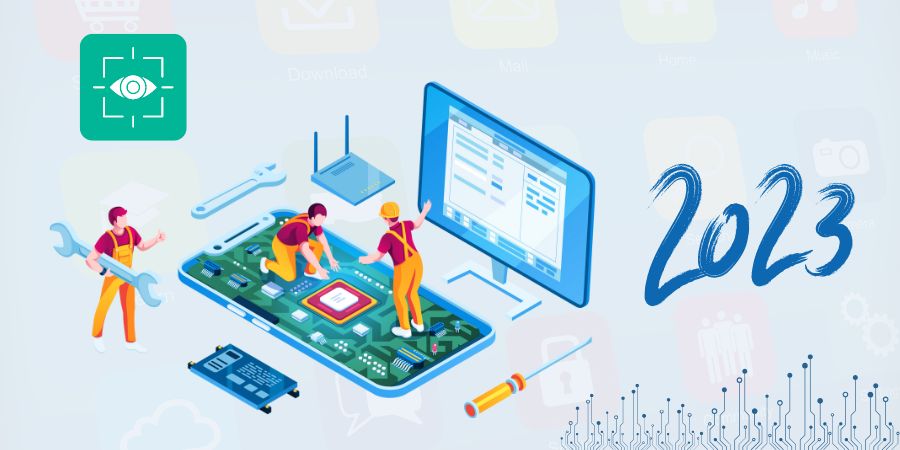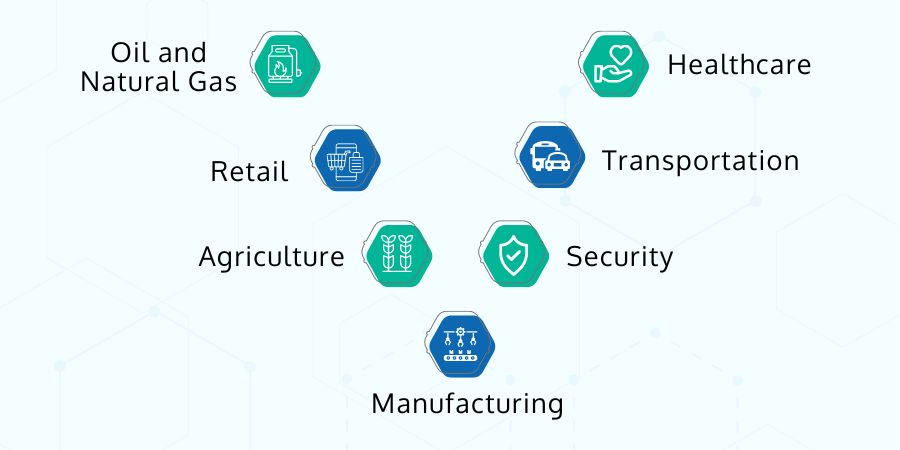
Advanced technologies such as AI and computer vision are expected to benefit from big data for proactively training computational models that lead to smart operations and processes across verticals.
Feeding data manually to machines has changed, and the process is now automated. People want machines to work identically to human intelligence - thinking and acting (or behaving) like human beings. One such advancement is giving computers the sense of sight to interpret their surroundings.
Computer vision has taken the lead, thanks to AI and computational power. This technology has the potential to transform industries as well as their mode of functions/operations. This blog comprehensively lists modern-day computer vision applications from various sectors.
A Note to Computer Vision
Being a branch of AI, Computer Vision allows machines to see their surroundings. All computer vision-enabled devices can analyze visual data (videos and images) and make intelligent decisions. Based on data insights, they can also comprehend their surroundings and situations. Computer vision is a game-changing technology enabling machines to mimic human vision systems. It can easily detect and label objects with high accuracy.
Visual data analysis and pattern recognition are central to computer vision. When trained, a system uses all its experience to recognize different images. The system acquires all images to identify colors, shapes, and other factors. The labeled images are fed to various software techniques that permit data experts to examine patterns.

Real-world Applications of Computer Vision
Real-world applications of computer vision show its importance across businesses and industries. These applications are driven by a pool of visual data obtained from visual-based devices and are being used for the following purposes:
1. Oil and Natural Gas
Every day, oil and gas companies produce millions of barrels of oil and cubic feet of gas. Geologists need help to identify a possible location for oil mining. They are required to analyze several locations using images taken on the spot.
So how long will it take to analyze each image to find the best location for oil and gas extraction? Implementing computer vision in this field saves time and effort. Feed the captured images into the pre-trained model, and the task will get completed automatically.
2. Healthcare
Computer vision is used to analyze CT and MRI data. It plays an important role in improving patient outcomes, from building AI systems for examining radiological images more accurately to employing deep learning algorithms for improving MRI resolution.
Computer vision assists doctors in detecting tumors, internal bleeding, clogged blood arteries, and other dangers by analyzing CT and MRI data. It is used in various diagnoses, from cancer detection to blood loss measurement. Dentists, for example, can spot dental issues in minutes and provide an AI-assisted report.
3. Retail
Cameras installed in retail stores to collect visual data are proven assets for improved customer and employee experience. Computer vision allows automated product check-out using customer interactions and tracking product movement. Collecting image data can perform a full inventory scan to track products on shelves. Computer vision helps send real-time notifications about stock-outs and sales.
Additionally, computer vision assists retailers in upgrading store layouts, conducting A/B testing, and generating heat maps while anticipating how long items will remain on shelves.
Computer vision can detect suspicious activity and alert staff about threats by analyzing CCTV camera footage. This can also detect other types of behavior, such as physical assaults or accidents, improving safety.
4. Transportation
Computer vision is extensively used in the transportation domain. For example, it helps self-driving cars to identify and categorize objects such as road signs or traffic lights and create 3D maps or motion estimations.
Computer vision supports research and development in pedestrian detection. As a process, pedestrian detection recognizes and locates pedestrians in images or videos using cameras. It analyzes pedestrian attire, body position, and illuminance in various scenarios that assist traffic management, autonomous driving, transit safety, and other applications.
By monitoring the condition of road infrastructure, a computer vision-enabled system detects pavement degradation, which increases active road maintenance and reduces accidental risks.
5. Agriculture
Crop surveillance systems aid in identifying, categorizing, and counting insects that are harmful to crops. Computer vision has contributed immensely to agriculture, including crop and yield monitoring, automated harvesting, livestock health monitoring, and weather analytics. It helps in the early detection of insect pests and allows farmers to take the necessary precautions to protect their crops while reducing damage.
AI-powered solutions analyze crop health by scanning crops' shape, color, and texture. Weather records, forestry data, and field security are also used for more accurate analysis.
6. Security
Computer vision has become the bread and butter of security and safety agencies. This helps detect a person's face and compares it to a database of people for facial recognition and authentication, which is useful for security applications.
Deep learning and computer vision work collaboratively to spot and remove fake news, preventing severe violence and disaster.
CCTV cameras combined with deep learning models and computer vision helps in detecting irregular activities such as theft, robbery, harassment, and fighting and alert safety charge to potential danger.
7. Manufacturing
Computer vision is used in manufacturing plants as well as AI-powered inspection systems like R&D laboratories and warehouses.
Computer vision helps predictive maintenance systems to inspect their systems. These systems reduce machinery breakdowns and product defects by continuously inspecting the environment. Whenever a potential breakdown is detected, the system notifies investigators and allows them to take preventive measures.
With the advent of Industry 4.0, computer vision is used to automate labor-intensive management processes. For example, Tesla has begun to automate all of its manufacturing processes in their capacities.
Conclusion
As more companies turn to AI, computer vision will emerge as a driving force transforming industries at scale. We have studied the different computer vision applications across verticals that heavily rely on image, video, or other visual data. This enables businesses to automate daily activities such as improving diagnostics, maximizing crop yield, and improving safety.

 Batoi Corporate Office
Batoi Corporate Office